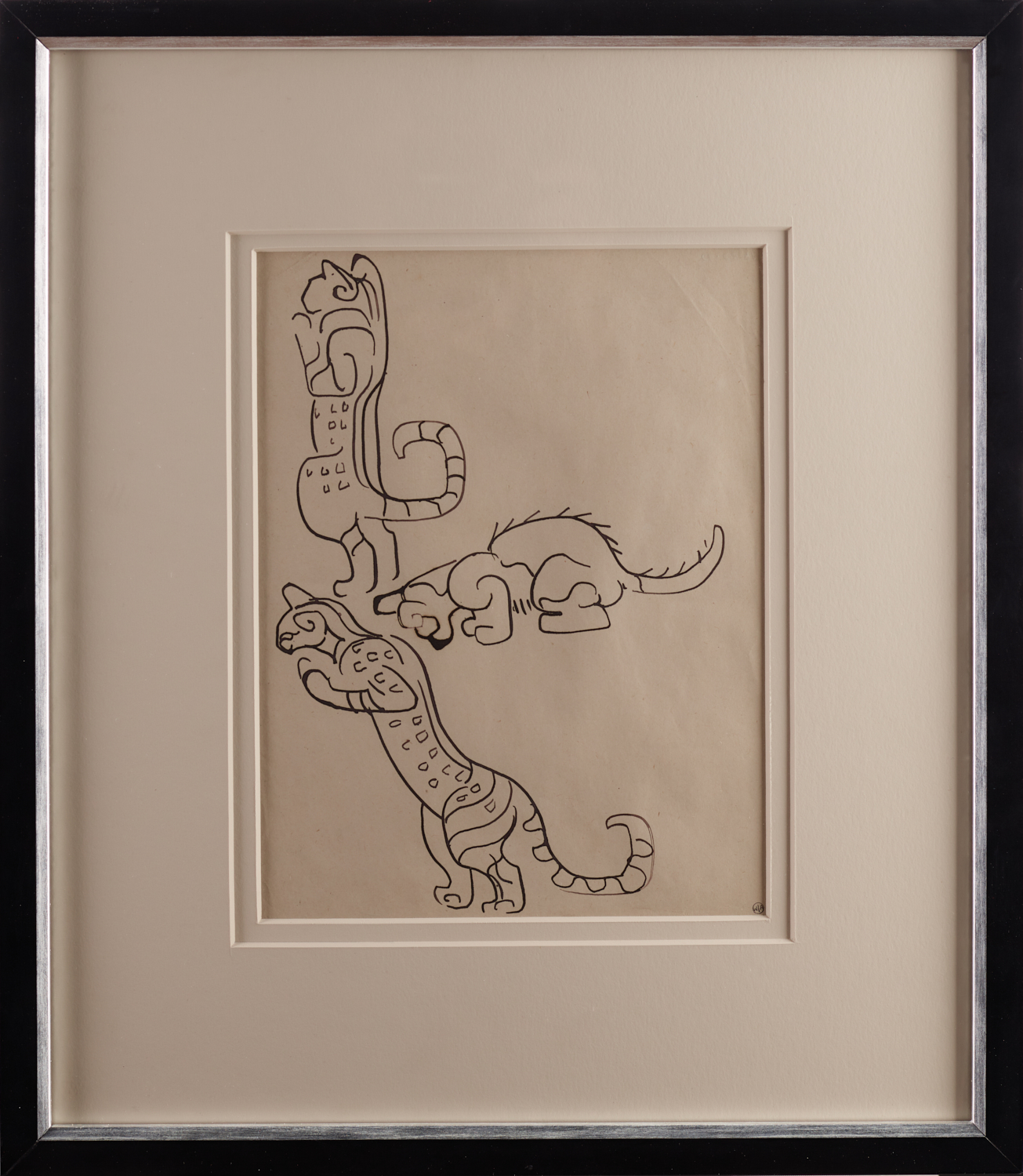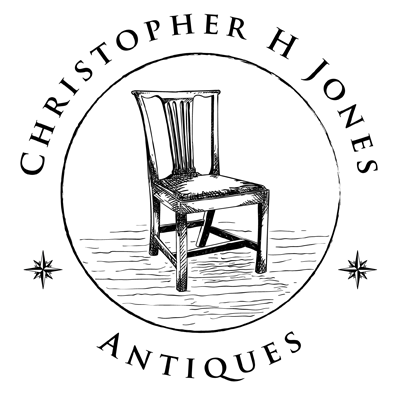Signed WA for Walter Inglis Anderson 1903-1965
Ocean Springs, Mississippi
Ink on paper
Image size: 11 x 8.5
Overall size: Conservation framed – 19″ x 16.5″
The artistic Anderson family was headed by Annette Anderson. She moved her family to Ocean Springs, Mississippi from New Orleans and there nurtured the creative genius of her three sons, Peter, Mac and Walter. In 1928 eldest brother Peter established Shearwater Pottery, named for the shorebirds around the Mississippi Sound. Annette, who had studied art at Newcomb College and brothers Mac and Walter created designs based on indigenous plants and animals to be transferred to the Shearwater pieces.
Walter Anderson left Ocean Springs to study at the Parsons Institute in New York and graduated from the Pennsylvania Academy in 1929 where he received a travel grant to study in France. He returned to America and resumed decorating ceramics at his brother’s Shearwater Pottery and pursued his interests in poetry, natural science, philosophy and mythology. He married Agnes Grinstead who supported his painting and they began a family. During the 1930’s he worked on several WPA projects and murals for the Ocean Springs school and community center. During this time, he began exhibiting symptoms of mental stress that would be a part of his artistic vision for the rest of his life. He was hospitalized after an attempted suicide and spent the next three years in and out of institutions. These years were a productive time in which he designed hundreds of linoleum block prints, some over six feet long. He illustrated fairy tales and literary classics using pen and ink and watercolors using the natural world around him as inspiration.
Eventually, Walter felt compelled to live alone and around 1947, with the understanding of his family he began a solitary existence. He set up house in a cottage in Ocean Springs. For the next 18 years he made frequent and extended trips to Horn Island, part of the barrier reef along the Gulf Coast, rowing the 12 miles of ocean to reach the island. Once there, he would set up camp for several weeks drawing and painting the island’s animals, birds, reptiles and insects. This was an intensely personal experience in which he explored his vision of reality and not intended for public view. When Anderson died in 1965 his wife opened a room in his cottage which had been padlocked. On the four walls were a remarkable mural of the Gulf Coast’s natural world – wild persimmons, possums, sea birds and insects at sunrise, sunset and in the starry night.
The work of his Horn Island years in particular gained the attention of art critics and a series of posthumous exhibitions garnered Anderson national acclaim. Several traveling exhibits were mounted in the last decades of the 20th century which exposed Anderson’s work and his both simple and complex reality to the nation. His cottage is now a museum in Ocean Springs.


